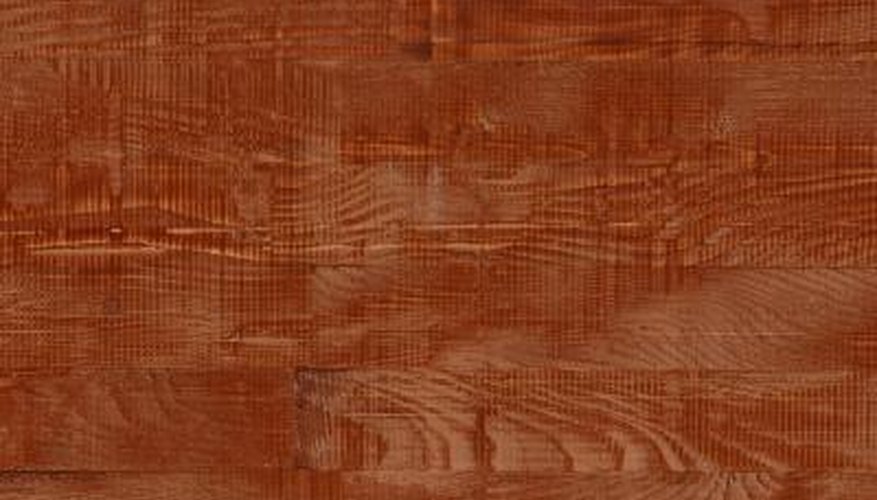Oak veneer is a thin layer of finished oak that's glued over a wood base so the surface has the look of oak without the weight and expense of solid oak. The problem with refinishing veneer is that, if you sand into the surface, you risk sanding through the veneer. Avoid that by refinishing only the gloss of the surface, not the stain, and using very fine sandpaper that won't go through the veneer.
Take the door off its hinges. Remove all knobs, latches and hardware. Set it up in a work area, with a tarp below it.
Use a vibrating pad sander and 220-grit sandpaper to dull the gloss on the veneer. Don't attempt to sand all the way into the wood veneer, just into the finish.
- Oak veneer is a thin layer of finished oak that's glued over a wood base so the surface has the look of oak without the weight and expense of solid oak.
- Use a vibrating pad sander and 220-grit sandpaper to dull the gloss on the veneer.
Wipe off the dust from the whole door, using a tack cloth.
Use a paint brush to apply a thin, even coat of polyurethane. Brush it on slowly and carefully, avoiding the formation of bubbles. Brush it with the grain of the wood. Cover the surface completely.
- Wipe off the dust from the whole door, using a tack cloth.
- Use a paint brush to apply a thin, even coat of polyurethane.
Let the polyurethane set for six to eight hours.
Use your 220-grit paper to dull the surface of the polyurethane, sanding it by hand with quick, light strokes, just enough to dull the shine of the gloss. Take up the dust with tack cloths.
Brush on a second polyurethane layer in the same way as the first. Let it dry, lightly sand it, and take up the dust.
Apply a third and final coat of polyurethane. Let it dry for 24 hours. Reinstall the door.
